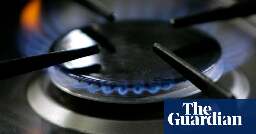Gas stoves increase nitrogen dioxide exposure above WHO standards – study



Science Advances report also finds people of color and low-income residents in US disproportionately affected
Using a gas stove increases nitrogen dioxide exposure to levels that exceed public health recommendations, a new study shows. The report, published Friday in Science Advances, found that people of color and low-income residents in the US were disproportionately affected.
Indoor gas and propane appliances raise average concentrations of the harmful pollutant, also known as NO2, to 75% of the World Health Organization’s standard for indoor and outdoor exposure.
That means even if a person avoids exposure to nitrogen dioxide from traffic exhaust, power plants, or other sources, by cooking with a gas stove they will have already breathed in three-quarters of what is considered a safe limit.
“When you’re using a gas stove, you are burning fossil fuel directly in the home,” said Yannai Kashtan, lead author of the study and a PhD candidate at Stanford University. “Ventilation does help but it’s an imperfect solution and ultimately the best way is to reduce pollution at the source.”
Folks this is a garbage study. N=18, and then extrapolating the dangers based on aggregated stats of disease states?
Yeah. I still want an induction stove, but this doesn't look good.
Same, I want both, with proper ventilation.
Gas for particular preparations where it's traditional/ideal and induction for everything else
There are plenty of valid reasons for wanting one. I'm not against them. They just don't suit my particular use case, and I hate deliberately misleading studies.
NO2 exposure hazards are already known, see the references in this study. This is only looking at NO2 production in homes, so I don't think 18 is too small a sample size. It's not like they're trying to determine whether burning natural gas produces NO2, that's a given. They're looking at how much, how factors like hoods and airflow affect it, and how it goes throughout the house, not just in the kitchen.
TBH the sample is less concerning than the experimental design, and by a lot.
That's a fair point and needs to be explored. But the study does not do what it says on the tin.